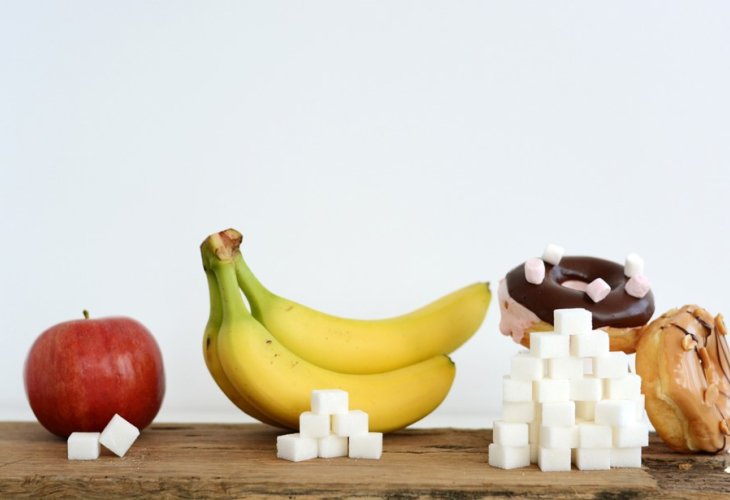Hidden Sugars: What's Lurking Behind Our Food?
Sugar can hide in various foods, even those that seem 'innocent.' So how do we know where to find hidden sugar? All the answers.
 (Photo: shutterstock)
(Photo: shutterstock)What is sugar? Sugar (according to Wikipedia) is a general term for short, edible carbohydrates with a sweet taste. Sugar is found in many foods we eat, but it is divided into many types:
Natural Sugars. Natural sugars are those found in fruits, vegetables, and milk, primarily in the forms of fructose and lactose. Because natural sugars are found in whole foods, they are often accompanied by other nutrients such as fiber, vitamins, minerals, antioxidants, and water.
Processed Sugars. Refined sugars are by-products of processed sugar beets, sugarcane, or corn. They are added to many processed foods to enhance sweetness.
Added Sugars. Added sugars are exactly what they sound like - sugars and syrups added during preparation, processing, or consumption. Even 'natural' sweeteners, such as maple syrup, agave nectar, and honey, are considered sugars.
Hidden Sugars. Hidden sugars are added sugars disguised by less familiar names and found in products where you might not expect them.
6 Ways to Find Sugar in Foods
1. Sugar is Called by Another Name
Sugar is the general name given to short-chain carbohydrates that give food a sweet taste like glucose, fructose, and sucrose. However, sugar has different forms and names that are harder to identify. For example:
- Barley Malt
- Beet Sugar
- Brown Sugar
- Cane Juice Crystals
- Cane Sugar
- Table Sugar
- Coconut Sugar
- Corn Sweetener
- Crystalline Fructose
- Date Sugar
- Dextrin, Malt Powder
- Ethyl Maltol
- Fruit Juice Concentrate
- Golden Sugar
- Maltodextrin
- Maltose
- Palm Sugar
- Organic Raw Sugar
- Evaporated Cane Juice
Sugar is also added to syrups. Syrups are typically thick liquids found in a wide variety of foods but are mostly in soft drinks or other liquids.
Common syrups to watch for on food labels include:
- Agave Nectar
- Carob Syrup
- Golden Syrup
- High Fructose Corn Syrup
- Honey
- Malt Syrup
- Maple Syrup
- Molasses
- Oat Syrup
- Rice Bran Syrup
- Rice Syrup
2. Using Many Different Types of Sugar
The order of ingredients listed on product labels is determined by weight, with the main ingredients listed first. The more dominant it is, the higher it will appear on the list.
There are products where manufacturers split the total sugar amount (which should have appeared high on the list) into smaller amounts of three or four sugar types in one product. These sugars appear lower in the ingredient list, making the product appear low in sugar when sugar is one of its main constituents.
3. Adding Sugar to the Most Unexpected Foods
It makes sense to find a lot of sugar in a cake or candy. However, there are quite a few products that seem innocent, such as cereals, sauces, and yogurts containing sugar. Since many people do not realize that sugar has been added to these foods, they are unaware of the amount of sugar they consume.
Therefore, when purchasing packaged goods, make sure to read the label and check the sugar content - even if the product seems healthy.
4. Using 'Healthy' Sugars Instead of Sucrose
Some products appear healthy because they replace sugar with a sweetener considered healthy. These sweeteners are usually made from the juice, fruits, flowers, or seeds of plants. Products with these sweeteners often have labels like 'contains no refined sugar' or 'no refined sugar.' This means they do not contain white sugar. These sugars can look healthier because some have a slightly lower glycemic index than regular sugar and contain minerals. This amount is negligible, and so far, no evidence suggests it is beneficial to use these sugars as a substitute for regular sugar.
5. Combining Added Sugars with Natural Sugars on Ingredient Lists
Certain foods, such as fruits, vegetables, and dairy products, contain natural sugars. Unlike added sugar, this usually does not pose a health concern. This is because natural sugar makes up a smaller percentage of daily intake compared to added sugar. The fibers in fruits and vegetables slightly slow the absorption of their sugar, and they contribute in terms of the antioxidants they provide to the body.
6. Attributing Health Properties to Products
The most common examples include labels like 'natural,' 'healthy,' 'low fat,' 'diet,' and more. Although these products may be low in fat and calories, they are often packed with added sugar. Therefore, do not rely on these statements, read the ingredient list, and apply dietary judgment.
So How Much Added Sugar is Okay?
General recommendations aim to limit up to 10% of total calories from sugar. This means that in an average 2,000-calorie diet per day, we can consume 200 calories from sugar, which is 50 grams or 12 teaspoons. If you are diabetic, this amount could throw you off balance. Let's remember that starch in carb-rich foods is not included in this calculation and breaks down in the mouth into simple sugar. Therefore, it is time to change the perception regarding the preference for complex carbs - whole grain bread and cereals, pasta, and rice, etc., in our diet.
Personalization is, of course, the key to success. If until now you have consumed 20% sugar, start by reducing the sugar, and gradually decrease the other carbohydrates in your diet. A dietitian can find nutritious solutions for you and guide you to a healthy diet to maintain weight and balance diabetes or other chronic diseases.
Adina Bachar is a diabetes and ketogenic dietitian at DMC Center for Diabetes Treatment

